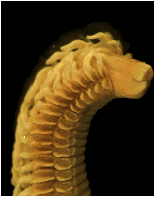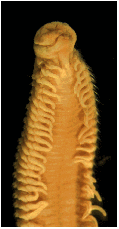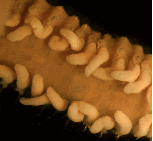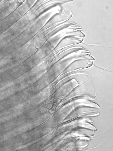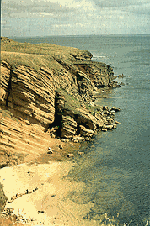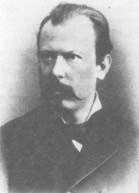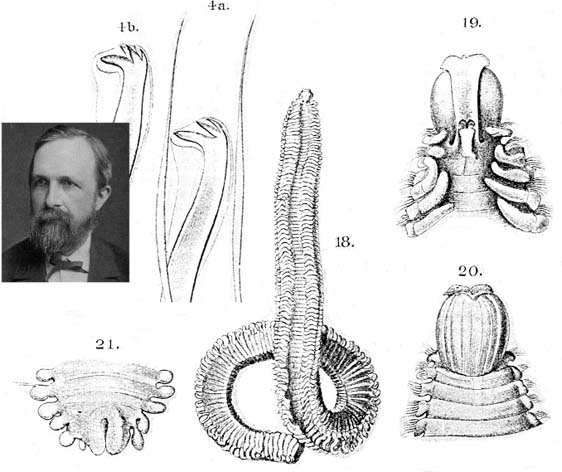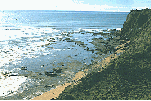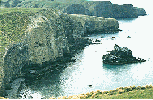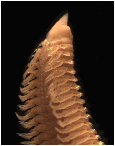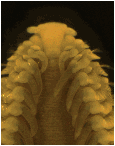|
The beachworm Spio aequalis
is a large polychaete unique to New Zealand. However, it has not been seen for fifty
years.
Spio aequalis Ehlers, 1904 remains an enigmatic polychaete known only from the original
discovery by Schauinsland somewhere on the Chatham Islands coast. Two subsequent unpublished South
Island sightings have come to light recently, but the length of time expired since the last
observation fits one definition of an extinct animal, and it has yet to be refound, despite
resampling attempts at all three of its now known locations.
What is Spio
aequalis? Spio aequalis, at around 15 cm long and 7 mm thick, is one of the largest
spionids known. The original type specimens are lost, so we depend on Ehlers' description in
old German and his figures. Possibly they were bad representations of one of the other large New
Zealand spionids? We know now that Ehlers described the animal fairly accurately; his drawing of
the head (below) with its odd bulbous pleated peristomium is recognisably from the same spionid as
in the photo here. However, the blunt prostomium is somewhat misrepresented in Ehler's figure.
Is the worm really a Spio? That is questionable. It is distinctive in several
features, including the hooks and branchiae. Crucially it may lack the characteristic anal cirri
of the genus, and it has eggs differing from other Spio.The egg envelope is thickened and
alveolated, usually an indicator of planktonic early development, and a character thought to be
important in the phylogeny of the family.
Hugo Schauinsland of Bremen visited the Chatham Islands during January-February
1897 whilst travelling around the Pacific. He was an energetic collector and took back to his
native Germany a very wide range of animals and fossils from the Chathams. The place where he
found Spio aequalis is not known. It might have been near Waitangi.
Below are the
S. aequalis figures of Ehlers.
|
|
